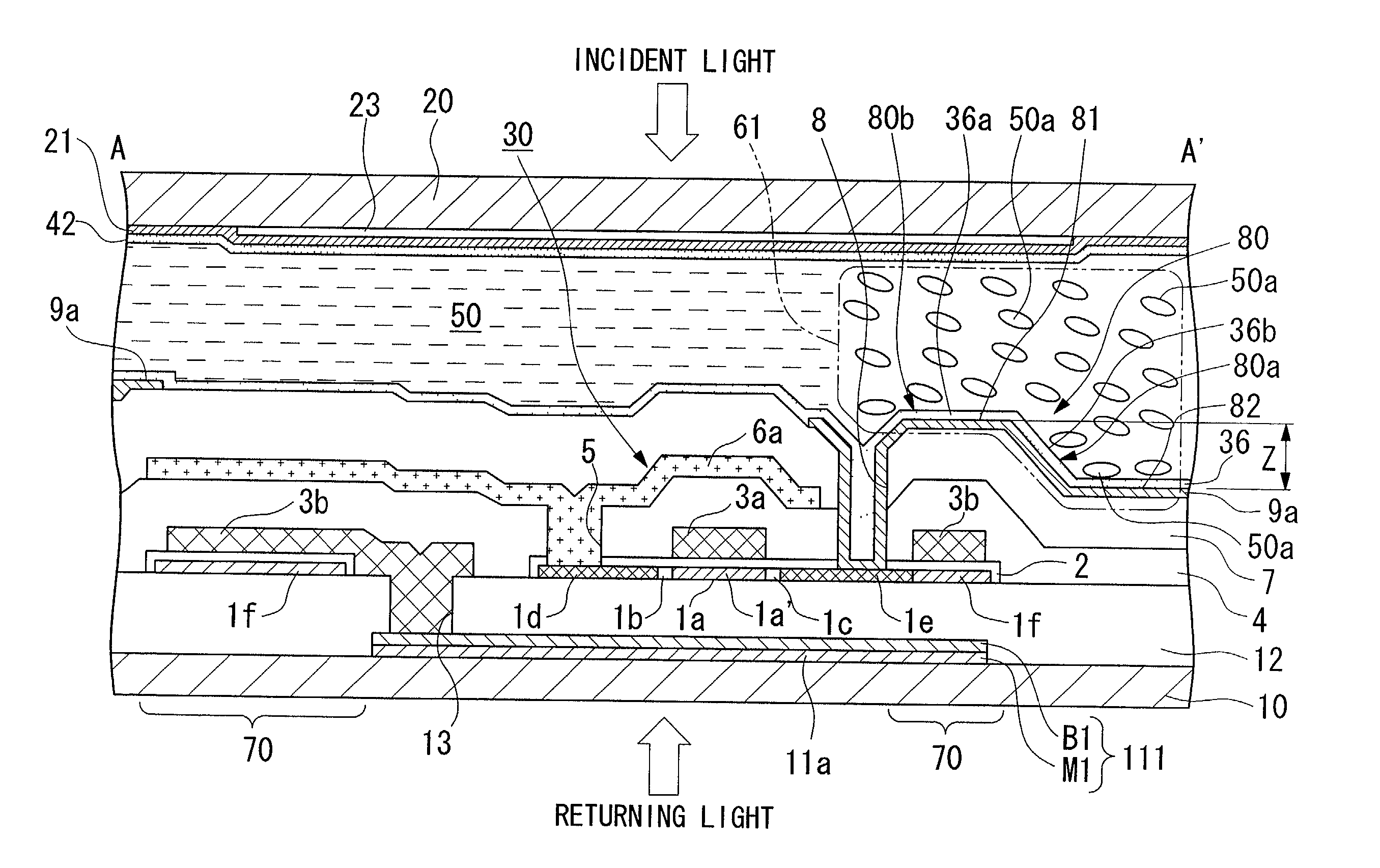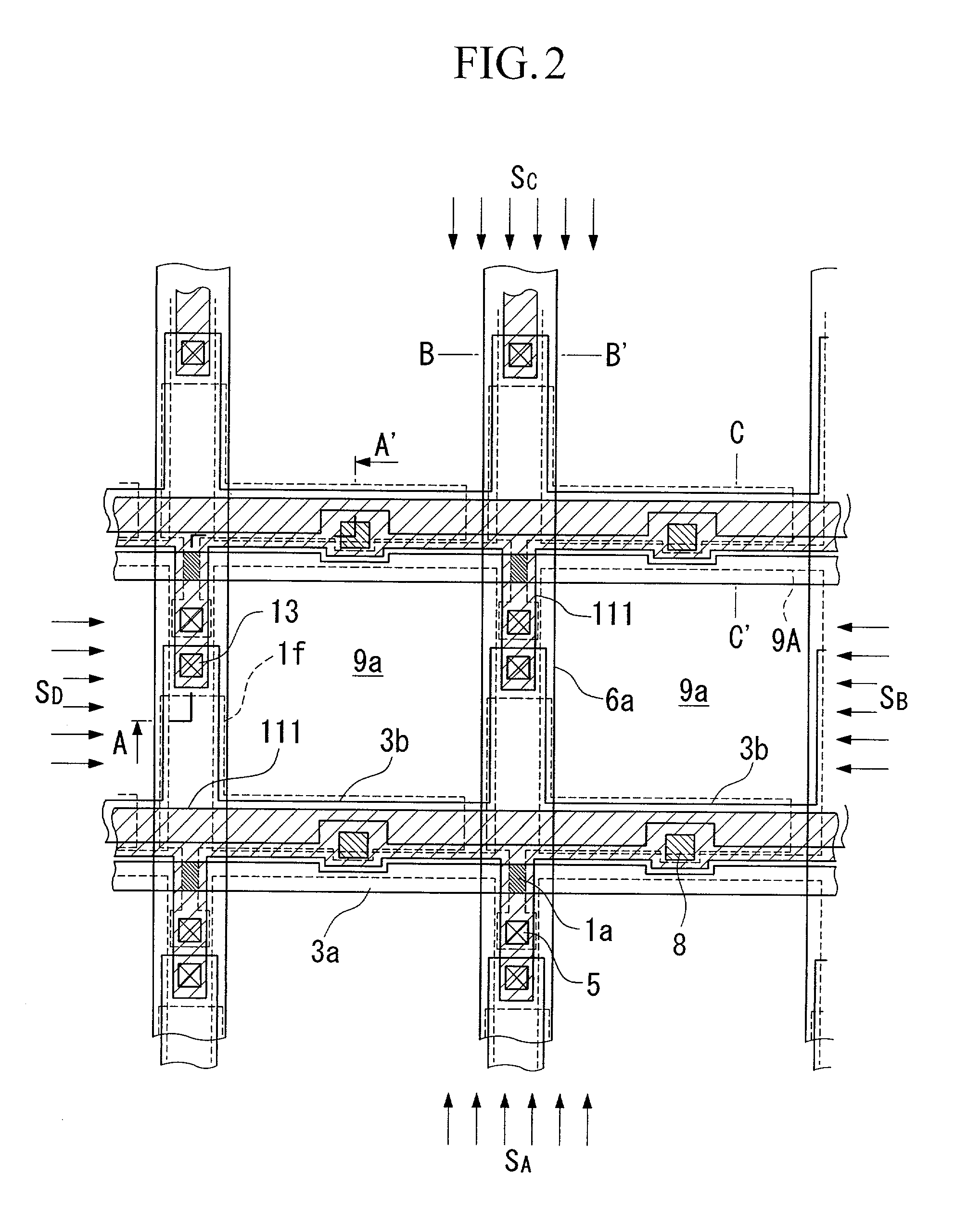Liquid crystal device, projection display device and, manufacturing method for substrate for liquid crystal device
a technology of liquid crystal devices and display devices, which is applied in the direction of liquid crystal compositions, instruments, chemistry apparatuses and processes, etc., can solve the problems of degrading display quality, affecting the unable to effectively rubbing the alignment layer, etc., to achieve inferior alignment of liquid crystals, no low contrast, and high display quality
- Summary
- Abstract
- Description
- Claims
- Application Information
AI Technical Summary
Benefits of technology
Problems solved by technology
Method used
Image
Examples
experimental example 1
[0196] The liquid crystal device of above first embodiment which is provided with the alignment layer made of two layers of inorganic oblique evaporation layer was produced. The pre-tilt angle .theta. was varied to various values by controlling the evaporation conditions while the cell gap d was made to be 3 .mu.m, and the twist angle .phi. of the liquid crystal layer was 90 degrees. The value of the helical pitch P of the liquid crystal was changed to 30, 15, 10, 7.5 (.mu.m) by adjusting the amount of chiral complex which is added to the raw material for liquid crystal. The existence of defective alignment was detected on the display of an actual projection type display device by visual observation under condition that the pre-tilt angle .theta. is 8 degrees. The results are shown in TABLE 1.
1TABLE 1 P(.mu.m) d / P(-) Display Condition 30 0.1 A 15 0.2 O 10 0.3 O 7.5 0.4 B
[0197] In TABLE 1, "A" in "Display Condition" indicates the case in which the area in which the twist angle is 90 ...
experimental example 2
[0199] The liquid crystal device of the second embodiment in which the alignment layer made of a single layer of inorganic oblique evaporation layer was produced. The pre-tilt angle .theta. was varied to various values by controlling the evaporation conditions while the cell gap d is made to be 3 .mu.m, and the twist angle .phi. of the liquid crystal layer is 90 degrees. The value of the helical pitch P of the liquid crystal was changed to 20, 12, 8.6, 6.7 (.mu.m) by adjusting the amount of chiral complex which is added to the raw material for liquid crystal. The existence of defective alignment was detected on the display of actual projection type display device by visual observation under conditions in which the pre-tilt angle .theta. was 27 degrees. The results are shown in TABLE 2.
2TABLE 2 P(.mu.m) d / P(-) Display Condition 20 0.15 C 12 0.25 O 8.6 0.35 O 6.7 0.45 B
[0200] In TABLE 2, "A" in "Display Condition" indicates the case in which the area in which the twist angle is 90 deg...
experimental example 3
[0202] Also, the inventors of the liquid crystal device of the present invention performed an experiment for proving the effect of the liquid crystal device in the present invention. The result of the experiments are explained as follows.
PUM
| Property | Measurement | Unit |
|---|---|---|
| twist angle | aaaaa | aaaaa |
| azimuth angles | aaaaa | aaaaa |
| thickness | aaaaa | aaaaa |
Abstract
Description
Claims
Application Information
 Login to View More
Login to View More - R&D
- Intellectual Property
- Life Sciences
- Materials
- Tech Scout
- Unparalleled Data Quality
- Higher Quality Content
- 60% Fewer Hallucinations
Browse by: Latest US Patents, China's latest patents, Technical Efficacy Thesaurus, Application Domain, Technology Topic, Popular Technical Reports.
© 2025 PatSnap. All rights reserved.Legal|Privacy policy|Modern Slavery Act Transparency Statement|Sitemap|About US| Contact US: help@patsnap.com



